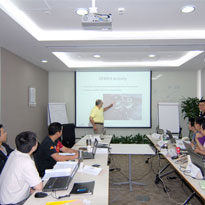TETRA in Depth with RF Basics
- Course:TETRA in Depth with RF Basics
- Course ID:TETRA-ID Duration:7 days Where: Your Office (7+ Persons)
- Download Course Description (PDF)
Available as a private, customized course for your group at your offices or ours and in some cases as a WebLive(TM) class.
Course Outline
Part 1: Basics of RF (2 days)
- Radio Waves and Channels
- What are radio waves?
- The electromagnetic spectrum
- Controlling radio use: The role of the regulator
- Spectrum allocations
- Radio bandwidth and channels
- RF Mathematics Explained
- A simple overview and explanation of the math we will use in this course
- The math processes and examples
- The Language of RF
- dBs, dBm, dBw, dBi
- Understanding the relevance of the terms
- Antennas and antenna gain
- Noise and Interference
- Signal to Noise Ratio (SNR)
- Shannon’s Law and its relevance
- Thermal noise
- Man-made noise
- Impact of rainfall and other impairments
- Radio Modulation
- What is radio modulation?
- Modulation techniques
- Forward error correction: What it is and how it works
- Radio Propagation
- What propagation is and how it works
- Impairments to propagation
- Path loss predictions and modelling
- Fading environments
- Multipath
- Diversity techniques
Part 2. TETRA in Depth (5 days)
- Introduction
- Trunked mobile communications
- Concepts and benefits of trunking
- TETRA technology
- ETSI standardization
- The TETRA MoU
- TETRA equipment and systems
- Features and Services
- TETRA features
- Bearer services, teleservices, supplementary services
- Voice and data services
- Circuit-switched and packet-switched data
- IP packet data
- Short Data Service (SDS)
- Direct Mode Operation (DMO))
- Trunked Mode Operation (TMO)
- Support for Value Added Services (VAS)
- TETRA applications
- Spectral efficiency
- Security aspects
- TETRA Architecture
- BS, LSC, MSC, LS, MT, TE
- TETRA network and standard interfaces
- Standard gateways
- Trunked mode air interfaces
- Inter System Interface (ISI)
- Terminal Equipment Interface (PEI)
- Line Station Interface (LSI)
- Network Management Interface (NMI)
- Direct Mode Air Interface (DMAI)
- Gateways to public networks
- TETRA Direct Mode Operation (DMO)
- Gateway mobile station
- Repeater station
- Interoperability
- Addressing, Numbering, Dialing, and TETRA MMI
- Numbering and addressing
- TEI, MNI, TSI, SSI
- GTSI, ATSI
- Handset identification
- Leading digit dialing
- Call scenarios
- TETRA IP
- TETRA Air Interface
- Spectrum allocations and channel assignments
- Physical and logical channels
- TDMA structure
- Medium Access Control (MAC) sublayers
- Logical Link Control (LLC) layer
- Frame, slot and burst structures
- Air interface message sets
- TETRA Procedures
- MS operational modes
- Mobility management
- Cell selection and reselection
- Cell selection in traffic mode
- Security, authentication, and encryption
- Failover options
- Example call setup message flows
- TETRA Voice Coding
- ACELP coding
- Speech vs. transmission frames
- Interfaces to other voice systems
- Voice transcoding
- TETRA and Data Networks
- Circuit mode data operation
- Packet mode operation
- X.25, TETRA data services, SCLNP
- Inter-network protocols
- TETRA IP
- Interworking with IP networks
- TETRA over IP solutions
- TETRA Security and Billing
- Overview of TETRA security requirements
- Authentication, air interface encryption
- End-to-end encryption
- Billing in TETRA networks
- TETRA Physical Layer
- Frequency allocation
- Carrier frequencies and radio channel numbers
- π/4DQPSK modulation
- Frame, slot and burst structures
- Synchronization
- Frequency reference
- Transmission delays
- Scrambling
- Power control
- Channel quality measurement
- Physical layer performance
- TETRA Data Link Layer
- LLC and MAC sublayers
- Coding and interleaving
- FEC and error detection
- Channel coding for data and signaling
- Coding parameters
- Stealing
- Random Access (RA)
- Logical channel routing
- System modes: Normal, extended, minimum, discontinuous
- Mobile station modes: Idle, signaling and packet data, traffic, economy
- TETRA Network Layer
- Network layer concepts
- TETRA network layer
- TETRA protocol stacks
- Mobile to base link
- Mobility management protocols
- Circuit mode operation
- Packet mode operation
- X.25, TETRA data services, SCLNP
- Inter-network protocols
- TETRA and Public Mobile Systems
- GSM services and features
- Comparison of TETRA and GSM
- Convergence of TETRA and GSM
- Evolution of TETRA towards 3G services
- Unifying TETRA and UMTS
- TETRA Network Planning
- Frequency spectrum, planning and re-useC/I requirement; coverage requirement
- Coverage planning
- TETRA link budget
- Capacity planning
- GoS requirement and traffic load prediction
- Challenges for TETRA planning
- Tools for TETRA planning
- Indoor Radio Planning
- Why is indoor coverage important?
- Indoor planning procedure
- The RF design process
- Design strategy
- The indoor link budget
- TETRA Performance
- Received signal strength measurement
- Signal quality measurement; receiver sensitivity
- Round trip MS-BS path delay
- TETRA reference channels; TETRA receiver classes
- Interference to other systems
- Monitoring TETRA performance
- Field measurements
- Tools for field measurement
- Wrap-up
- Course Recap and Q/A
- Evaluations
Course in a Nutshell
This comprehensive 7-day course includes an introduction to RF (Part 1) followed by in-depth discussion of TETRA (Part 2). It’s aimed at technicians and others with limited exposure to Telecommunications (especially RF) and Mathematics. We will teach this course in a manner that enables easy understanding through the use of diagrams, examples, and easy-to-follow explanations.
Customize It!
We can customize this course to your technical requirements, usually at little to no added cost. The course can be shortened or lengthened and its content tailored to suit the needs of your group.
Aimed At
This course is aimed at technicians and others who need a “user friendly” but fairly in-depth course on TETRA.
Prerequisites
Some prior exposure to RF will be helpful though not required.

